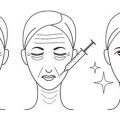Understanding Hyperpigmentation
Hyperpigmentation is a common skin concern that shows up as dark spots or patches on your skin. But what exactly is it, and why does it happen? In simple terms, hyperpigmentation happens when your skin produces too much melanin—the pigment responsible for the color of your skin, hair, and eyes. When certain areas of your skin create more melanin than others, you end up with those pesky dark spots or uneven patches.
The science behind it is pretty straightforward. Melanin production can be triggered by different factors like sun exposure, hormonal changes, acne scars, or even injuries to the skin. For example, if you love spending time outdoors without sunscreen, UV rays from the sun can signal your skin to make extra melanin as a way to protect itself. Unfortunately, this defense mechanism often leads to those stubborn dark marks we try so hard to fade away.
It’s important to know that hyperpigmentation isn’t one-size-fits-all. It can look different depending on your natural skin tone and what’s causing the discoloration in the first place. Understanding these basics will help you figure out what’s going on with your own skin and choose products or treatments that actually work for you—instead of wasting money on things that don’t deliver results.
2. How Skin Tone Influences Hyperpigmentation
Hyperpigmentation can look quite different depending on your skin tone. While everyone can experience dark spots, the way they show up—and how stubborn they are—varies from fair to deep complexions. Understanding these differences is key to finding the right care for your unique skin.
| Skin Tone | How Hyperpigmentation Appears | Common Causes | Healing & Treatment Challenges |
|---|---|---|---|
| Fair (Light) | Spots tend to be red, pink, or light brown; more visible contrast with natural skin color. | Sun damage (freckles, age spots), acne scars, inflammation. | Often responds well to over-the-counter brightening products but at higher risk for irritation and redness. |
| Medium (Olive/Beige) | Patches may look tan, brown, or ashy; sometimes harder to notice than in very light or deep skin. | Acne marks, melasma, hormonal changes, sun exposure. | Treatments need balancing—too strong can lighten natural skin, too mild might not work well. |
| Deep (Brown to Very Deep) | Dark brown, blue-gray, or even purple patches; may linger longer and look more dramatic. | Post-inflammatory hyperpigmentation (PIH) from acne, eczema, razor bumps; sun exposure intensifies marks. | Higher risk of uneven lightening and post-treatment discoloration; needs gentle yet effective options. |
People with deeper skin tones produce more melanin, which means hyperpigmentation tends to be more noticeable and can take longer to fade. On the other hand, those with fair skin may see spots pop up quickly after sun exposure or breakouts but often respond faster to treatment. No matter your skin tone, always use sunscreen—UV rays make all types of hyperpigmentation worse! Tailoring your routine based on your skin’s unique needs is essential for healthy, glowing results.

3. Common Causes Across Skin Tones
When it comes to hyperpigmentation, several major triggers are shared across all skin tones, but their impact can vary depending on your background and genetics. Let’s break down the most common culprits and how they show up in different communities.
Sun Exposure: The Number One Offender
UV rays from the sun are a top cause of dark spots for everyone. Whether you have fair or deep skin, unprotected sun exposure can ramp up melanin production, leading to uneven patches. However, people with lighter skin may notice freckles or sunspots more quickly, while those with deeper skin tones might see larger, darker patches form over time.
Hormonal Changes: Not Just a Teen Thing
Changes in hormones—think pregnancy, birth control, or even certain health conditions—can trigger melasma, a type of hyperpigmentation. This is especially common in women and can show up as symmetrical patches on the cheeks or forehead. While anyone can get hormone-related pigmentation, studies show it’s more prevalent and often more stubborn in medium to deeper skin tones.
Acne Scars and Inflammation: The Aftermath
Post-inflammatory hyperpigmentation (PIH) happens when skin heals after acne, eczema, or even a scratch. For people with medium to dark skin, PIH tends to be darker and lasts longer compared to those with lighter complexions. That’s why treating breakouts gently and avoiding picking is extra important for these groups.
Cultural Prevalence & Awareness
Certain triggers are more common in specific communities due to genetics or lifestyle habits. For example, South Asian and African American communities often report higher rates of PIH, while melasma is frequently seen among Latinx individuals. No matter your background, knowing your risk factors helps you take smarter steps toward prevention and care.
Takeaway:
No one is immune to hyperpigmentation—but understanding your personal triggers based on your skin tone and heritage makes all the difference in building an effective skincare routine.
4. Treatment Options That Work
When it comes to treating hyperpigmentation, there’s no one-size-fits-all solution—especially since different skin tones react differently to certain ingredients and procedures. Let’s break down the most effective options, from prescription treatments to lifestyle tweaks, and highlight what’s generally safe for each skin tone.
Prescription Treatments
If your dark spots are stubborn, a dermatologist might prescribe stronger solutions. Here are some common options:
| Treatment | How It Works | Safe For |
|---|---|---|
| Hydroquinone | Lightens existing dark spots by blocking pigment production | All skin tones, but lower strengths recommended for deeper tones due to risk of irritation or further pigmentation |
| Tretinoin (Retinoid) | Speeds up cell turnover, fading spots faster | All skin tones, but can cause dryness/irritation; start slowly with darker skin tones |
| Corticosteroids | Reduces inflammation that may worsen hyperpigmentation | All skin tones; short-term use only |
| Azelaic Acid | Targets abnormal pigmentation and is anti-inflammatory | Especially good for medium-to-deep skin tones as it’s gentle and less likely to irritate |
Over-the-Counter (OTC) Solutions
You don’t always need a prescription! Some effective OTC ingredients include:
- Vitamin C: Brightens and evens out tone; suitable for all skin types.
- Kojic Acid: A natural lightener that’s often well-tolerated in medium to deep complexions.
- Niacinamide: Helps fade spots and strengthens the skin barrier—great for sensitive or darker skin tones.
- Glycolic or Lactic Acid (AHAs): Gently exfoliates for brighter skin; use cautiously on deeper skin tones to avoid irritation.
- Sunscreen: Daily SPF 30+ is non-negotiable! Prevents further darkening across all complexions.
Lifestyle Changes That Make a Difference
- Avoid Picking: Don’t pick at acne or scabs—this increases the risk of post-inflammatory hyperpigmentation, especially in medium to deep skin.
- Sunscreen Habits: Apply every morning (even on cloudy days) and reapply if you’re outdoors.
- Mild Cleansing: Use gentle cleansers and avoid harsh scrubs that can inflame the skin.
- Healthy Diet: Antioxidant-rich foods (like berries and leafy greens) support overall skin health.
Treatments to Approach with Caution (Especially for Medium to Deep Skin Tones)
- Chemical Peels & Laser Therapy: These can sometimes worsen pigmentation in darker complexions if not done by an expert familiar with your skin type. Always consult a board-certified dermatologist who has experience treating diverse skin tones.
- Aggressive Exfoliation: Overdoing it can trigger more discoloration rather than help fade it.
Your Takeaway?
No matter your shade, consistency is key—and sun protection is your best friend! If you’re unsure about which treatment suits your unique complexion, check in with a dermatologist who understands multicultural skincare. With patience and the right approach, you’ll see those spots fade!
5. Prevention Tips for Every Skin Tone
Hyperpigmentation can affect anyone, but the best way to deal with it is to stop it before it starts. No matter your skin tone, everyday habits play a big role in prevention. Here are some practical tips that work for everyone:
Sun Protection Is Non-Negotiable
The sun is one of the main triggers for dark spots and uneven skin tone. Always wear broad-spectrum sunscreen with at least SPF 30—even on cloudy days or if you’re indoors near windows. Reapply every two hours if you’re outside or sweating. Don’t forget areas like your ears, neck, and hands! Rocking a wide-brimmed hat or UV-protective clothing adds extra coverage.
Be Gentle With Your Skin
Whether you have fair, medium, or deep skin, harsh scrubs and aggressive skincare can make hyperpigmentation worse. Instead, choose gentle cleansers and avoid picking at blemishes or scabs. Pat (don’t rub) your face dry and go easy on exfoliants—once or twice a week is enough for most people.
Smart Choices in Skincare Products
Look for products with ingredients known to support even skin tone, like vitamin C, niacinamide, or licorice root extract. These are suitable for all skin tones and can help brighten without irritation. If you’re trying something new, do a patch test first—especially if your skin is sensitive.
Stay Consistent With Your Routine
The key to prevention is consistency. Stick to your routine daily and be patient; results take time but healthy habits pay off in the long run.
Extra Tip: Watch Out for Heat!
Besides sunlight, heat from things like hot showers or saunas can also trigger dark spots, especially in deeper skin tones. Try to keep water lukewarm and limit time in direct heat when possible.
Remember: these prevention strategies work together no matter what your skin color is. By making these simple steps part of your everyday life, you’ll be setting yourself up for healthier, more radiant skin over time.
6. When to See a Dermatologist
If you’ve been struggling with hyperpigmentation and over-the-counter products just aren’t cutting it, it might be time to call in the pros. So, when should you book that appointment? Here’s your guide on when to seek professional help—and how to find the right dermatologist for your unique skin tone.
Signs You Need Professional Care
While mild dark spots often fade with consistent skincare and sun protection, there are times when expert intervention is essential. Consider seeing a dermatologist if:
- Your hyperpigmentation is spreading or changing rapidly
- Dark patches are accompanied by redness, itching, pain, or swelling
- You’re not seeing improvement after 2-3 months of dedicated at-home treatment
- The pigmentation is causing emotional distress or affecting your confidence
Why Specialized Experience Matters
Not all dermatologists have the same level of experience treating diverse skin tones. Hyperpigmentation can look different—and respond differently—depending on your natural melanin levels. Treatments like lasers or chemical peels require extra expertise in deeper skin tones to avoid complications like post-inflammatory hyperpigmentation or scarring.
Tips for Finding the Right Dermatologist
- Look for board-certified dermatologists who mention expertise in treating multicultural or ethnic skin in their profiles.
- Check reviews from patients with similar skin tones or concerns.
- During your consultation, ask about their experience with hyperpigmentation in people of color and what treatments they recommend for your specific needs.
Remember: You deserve care that respects and understands your skin’s unique characteristics. Don’t hesitate to ask questions and advocate for yourself—it’s the best way to achieve healthy, even-toned skin, no matter your complexion.
